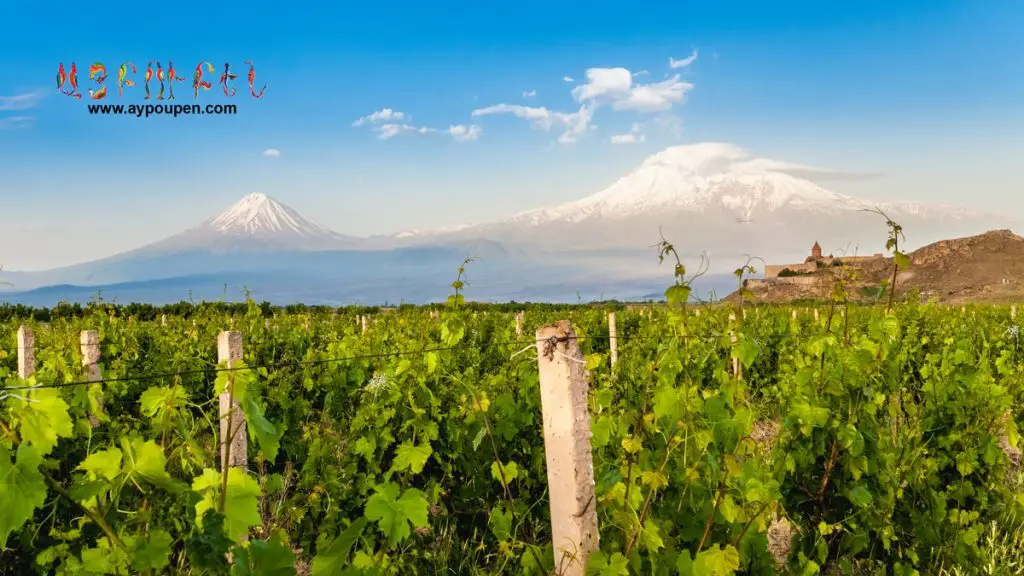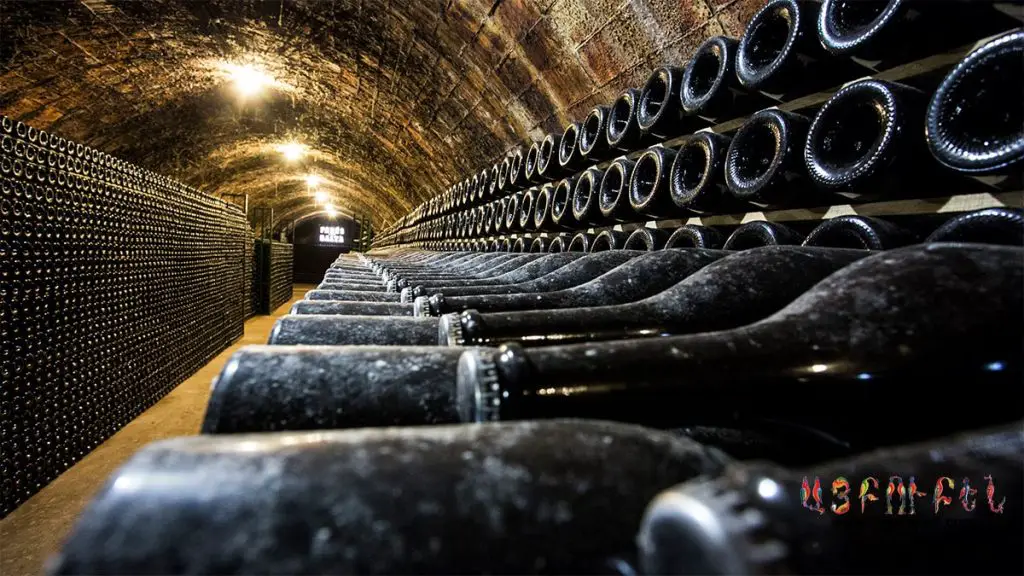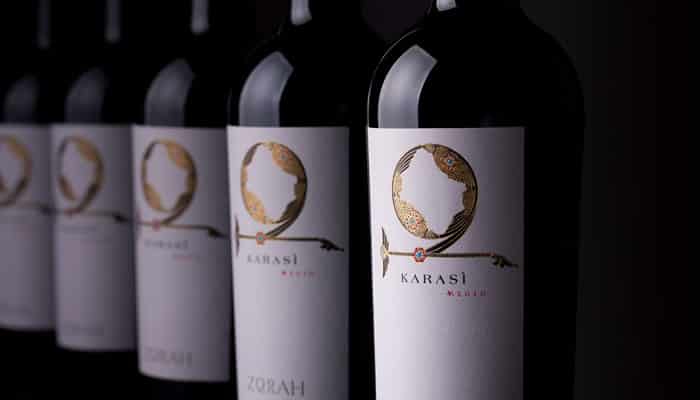Armenia – a small Caucasian country that can easily be covered on the map with one finger. Nevertheless, this small country is where Noah’s Ark landed on Mount Ararat and rebooted human history.
Ararat Valley was the place where Noah planted grapes. Later, Armenians, with their ancestor Hayk surrounded Ararat with churches and many other monuments of historical significance.
How Old is the history of Armenian wine?
According to legend, Noah planted the first vine at the foot of Mount Ararat after the flood. Noah discovered the secret of wine-making when a goat ate wild grapes, got drunk, and began to push the other animals. That’s also when Humanity first discovered the taste of wine and felt its influence.
After that, Noah planted grapes on the slopes of Mount Ararat and made wine from its fruits. The wine was so delicious that he could not resist the temptation “he drank and became drunk.” Here is the first information about Armenian grapes and wine, as old as the world and as reliable as the old testament.
The Armenians created wine, the Greeks made it a business, and the French made it an art.
The French saying:

The peculiarity of Armenian wine is that you feel what you can’t express in words.
Charles Aznavour
Is Armenia the Birthplace of wine? where is the oldest Winery in Armenia?
Since ancient times, Armenia has been known for its winemakers. Armenians use Ancient methods of grape and wine cultivation. Traditions that have been known since the time of the Urartian Kingdom and have been preserved until today.
The excavations carried out by the 19-20th century academician Petrovsky confirmed that Armenia was a developed winemaking state as early as the 9th century BC.
Archaeologists discovered a wine storage room with 480 jars in the Karmir Blur (Teishebayni) fortress. About 37,000 Dekaliters of wine could have been stored.
During the excavations of Erebuni (a city-fortress in the territory of present-day Yerevan, built 2800 years ago), 10 wine storage rooms were found, where there were 200 wine jars.
ARIN – BERD, KARMIR BLUR, TEYSHEBANI, ELAR DARAN
The Urartian cities near the biblical Ararat, where according to Archaeological excavations and scientific proof, winemaking was high among our Armenian ancestors.
Is Armenian wine good?
Armenian wine-making art is a separate and unique cultural page. Thousands of tourists from all over the world every year witness the winemaking process. They visit the Areni winery, which is one of the famous tourist places in Armenia, located 110 km from Yerevan.
During the excavation in 2011, it turned out that the oldest winery in the world is more than 6000 years old and it is located in the village of Areni. Every year in October, Areni holds a wine festival, which gives people the opportunity to taste various types of wine.
Yes, of course, in Armenia one can find large varieties of wine, including wine from grapes, pomegranates, raspberries, apricot, peach, cherry, and quince.
Behold, what you can see in a winemaking festival: people gather grapes and pour a small portion into special barrels where a couple of girls are dancing and squashing grapes turning them into wine.
However, the rest of the grapes are delivered to special factories and, using special equipment, are converted into wine, which is poured into barrels and stored in special conditions.
Over the years, these barrels open, are bottled, and the finished wine is bottled, labeled, and delivered not only to stores in Armenia, but also abroad, and put up for sale.
Where is the oldest vineyard and winery in the world located?Areni-1 cave Vayots Tzor, Armenia, dating back to 4100 BC
Secrets of storing and drinking Armenian Wine
When pouring wine into barrels, it should be poured very tightly, and without leaving air escape, so that during ventilation the smell does not disappear. When drinking wine, it is necessary to keep the glass from the bottom of the stem so that it does not heat up.
Before drinking wine, you need to mix it a little, so that its smell spreads and increases, and when mixing, you can pay attention to how quickly the wine drains from the top of the glass, and the slower it is poured, the higher the quality of the wine.
Then you should smell some wine and drink it because eighty percent of the taste of wine is in the smell.

Why do Armenians make so much wine?
One of the logical answers to this question is that Armenia has fertile lands appropriate for growing grapes. According to the Vine & Wine Foundation of Armenia, the country has more than 400 indigenous grape varieties, or about half as many as Italy, which is geographically 10 times larger.
Of that total number, 31 grapes are used to make wine. For whites, common grapes include Voskehat and Kangun, for reds, Areni rules.
Is Armenia Good for Wine?
Another reason for making wine is the great demand in Europe and Russia. There are many people who value Armenian wine for its unique taste and aspire to it.
This particular taste has a direct relationship with oak barrels, which can be up to 250 years old. This wood originates from forests in the Artsakh region (also known as Nagorno-Karabakh). This oak provides strong flavors including sweet tones such as vanilla, as well as spiciness and aromas of eucalyptus.
Ararat Mkrtchyan of ”Voskeni Wines” once spoke about this oak. ”Armenian oak is considered more intense than French oak because the humidity is lower. So, it requires less contact time with wine. It is a different and darker species of oak with tighter porosity and has spicy potential for wines.
But it must be well prepared and dried for at least three years to avoid the taste of green tannins.”
Best regions to tour and buy Armenian Wine
Voskevaz, Ashtarak, Yerevan, Sasunik, Areni, Aragatsotn, Armavir, Aghavnadzor Village, Taperakan, Vagharshyan are some famous areas for winemaking in Armenia but mainly the best are considered:
- Shirak
- Tavush
- Aragatsotn
- Kotayk
- Vayots Dzor
And several varieties with a nutmeg aroma are still cultivated today in the Ararat valley, its foothills, and northeastern Vaik and Zangezur zones.
The most common varieties of Armenian Wine:
- Voskehat,
- Garan Damak,
- Sev Areni,
- Karmrahyut,
- Nrneni,
- Azateni,
- Mskhal,
- Meghrabyur,
- Nerkarat,
- Ararat,
- Shahumyan,
- Anahit,
- Armenia.
Armenian quince wine
Radiant white sweet wine with the aroma of ripe quince. Perfect for meat dishes, poultry, desserts, and fruits.
Armenian plum wine
Red plum wine has an intense but balanced taste of ripe plums with subtle nuances of plum pits. This wine will brighten up cheese platters, meat dishes, and desserts with some sourness.
Pomegranate semi-sweet
Pomegranate semi-sweet wine captivates true connoisseurs with its sweet and tart taste of pomegranate. Exquisite subtlety of wine – a long, nutty, cherry aftertaste, where tobacco notes are noticed.
The wine goes well with roasted juicy meat and cold appetizers. Also great for cheese dishes and snacks.
Blackberry Armenian wine
A favorite is also Armenian blackberry wine. Fragrant wine with a sweet and sour taste and rich red color with hints of wild berries is perfect for grilled meat with spicy or citrus sauces.
Cherry wine
Another queen of Armenian wines is a semi-sweet cherry wine. Its deep purple-tinged red color is rich in hints of vanilla and cinnamon.
The wine has a lingering aftertaste with waves of almond flavors. This wine is usually served with hard cheeses, fruits, and sweet desserts.
Raspberry wine
The list of the most delicious Armenian wines includes rosé wines. One of the brightest representatives of Armenian rose wines is raspberry wine. The best ripe berries are selected for its production, due to which the drink’s color comes out satiny and shimmering in violet.
This lovely velvety wine with undulating raspberry notes is an excellent choice for a romantic dinner and will perfectly complement chocolate desserts.
Dry Armenian wine “Areni” with hints of wood
One of the most famous Armenian wines, which is also dearly loved abroad, is Areni dry wine. The wine is made from the grape variety of the same name. This wine is unique because it is aged for at least three years and always in oak barrels; as a result, the wine has a woody aftertaste.
In addition to woody notes, cherry and fruity astringency are felt in the wine. Notes of wood and cherry organically complement meat dishes, especially for lamb, poultry, and hard cheeses.
Red Armenian wine “Getashen.”
Suppose you are planning to sit at a Caucasian or Asian table. In that case, the famous Armenian dessert wine “Getashen” resembles Cahors. The velvety taste, combined with notes of fruits and mountain herbs, gives the wine astringency in the aftertaste and perfectly complements bright Caucasian and Asian dishes.
Armenian semi-sweet wine “Muscat.”
Semi-sweet wine “Muscat” is rightfully considered one of the best wines of Armenian production. Light golden wine has a refreshing taste that has citrus notes and an expressive Muscat aroma. This wine is just an excellent aperitif, but it can also be served with fruits, fruit desserts, and vegetable snacks.
Fruity Armenian wine
The Armenian white fruit wine “Etchmiadzin” has an exquisite taste. This semi-sweet drink is made from Voskehat grapes. In the taste of the famous wine, the aromas of light fruits and berries sound bright.
The unique highlight of the wine is a bitter aftertaste after the primary semi-sweet wave. The wine will perfectly complement the dishes of redfish and poultry. It will be organically combined with cheese snacks and a fruit platter.
Armenian Wine Brands and prices
Armenian wines are poetic and mysterious, represented by large firms and, small family farms, local and even foreign enterprises:
- Arame pomegranate semi-sweet- 9 €- has already been appreciated by the market. The tart aroma of a dark red velvet drink lasts a long time even in an empty bottle
- Areni Karas Red Cherry- 12 €- is prepared from ripe varieties of cherries;
- Artsuni Flame delicious plum- 10€- will surprise you with the aroma
- Dry Areni red 2014 -32€-;
- Artsuni delicious plum -10€ – will surprise you with the aroma of prunes pits;
- Voskevaz red semi-sweet, classic taste balance;
- AYrum is a golden-straw specimen of fine table wine;
- Aygeshat is a delicate amber drink made from Voskeat variety berries;
- Ashtarak is a dark golden miracle, somewhat similar to sherry;
- Zorah Karasi- 37 € – in the top ten best wines in the world (world record holder with the title of “the highest vineyard in the world”)
Getting Organized After the Soviet Era: Brandy Vs Wine
And the last reason for the developing wine culture in Armenia is that during Soviet rule between 1920 and 1991, winemaking in Armenia suffered from a heavy focus on quantity over quality. Brandy was then considered more important to produce than wine.
In 1980, Armenia produced a quarter of all brandy consumed in the Soviet Union. In the time of the Soviet Union, all wineries belonged to the government. They destroyed many vines and there was no interest in know-how.
They produced high quantities of very sweet wines according to planned production. Just three years ago there was no organization to unify producers around the table to work together and strategize. Now Armenian wine producers are more unified after the wine sector was recognized by the government as key to the economy.
After the Soviet Union times, there are many chances for Armenia to bring back its position in this field of economy. In April 2005, Texas A&M University established the International Educational Complex for Agribusiness and Education (ICARE) in Yerevan.
In 2014, Semina Consulting CJSC and ICARE-I founded the Yerevan Wine Academy (EVN Wine Academy). The academy has a research center through which it is planned to create a donor bank for Armenian wines. In the academy, there are highly qualified specialists.

Armenian Wine on the International Market
In recent years, Armenia has had the opportunity to participate in various international winemaking competitions. ”Decanter World Wine”, where Armenian wines have appeared in recent years, has been held in London since 2004. Forty-seven countries submit applications for the competition annually.
Qualified judges, sommeliers, and ordinary people evaluate the quality of the wine. 200 experts from all over the world were awarded silver, gold, and double gold. In 2012, Armenia for the first time participated in the ”Decanter World Wine” exhibition, presented one type of wine – ”Zorah” and won a bronze medal.
There is a hope that in the next 10-20 years Armenia will overcome all the obstacles associated with winemaking, reminding the world about its history and wine traditions.
French people say that wine was created by Armenians, Greeks turned it into a business and the French turned wine into art. It is time to go back to history and welcome Armenia into its new era of wine culture.
Check out the page of Areni Wine Festival on Facebook
If you liked this article please read how Archaeologists discovered world’s earliest winery in Armenia, dating back to circa 3,000 to 3,500 BC.

